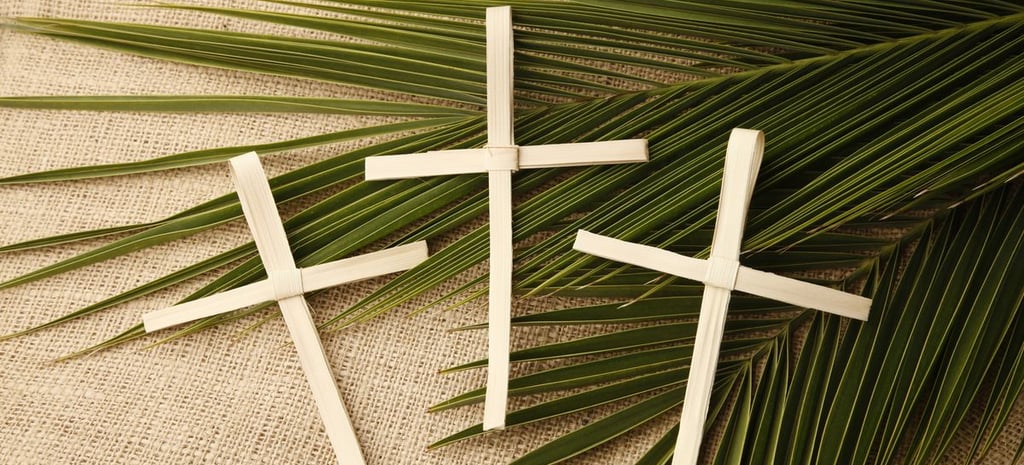The Symbolism of Palm Sunday
CHRISTIAN HOLIDAYS


Introduction
Palm Sunday is an important day in the Christian calendar that commemorates Jesus Christ's triumphal entry into Jerusalem. It is celebrated on the Sunday before Easter and holds great significance in the overall narrative of Jesus' life. One of the key elements associated with Palm Sunday is the use of palm branches, which carry deep symbolism within Christianity. In this blog post, we will explore the significance of palm branches and their symbolism in Christianity, including their representation in art and religious practice.
The Symbolism of Palm Branches
Palm branches have been used as symbols of victory, triumph, and celebration in various cultures throughout history. In the context of Christianity, palm branches hold a special meaning that is closely tied to the events surrounding Jesus' entry into Jerusalem.
According to the Gospel accounts, as Jesus rode into the city on a donkey, the crowds welcomed him by spreading their cloaks on the road and waving palm branches in the air. The use of palm branches during this event carries several layers of symbolism.
Firstly, the palm branches symbolize victory and triumph. They were used in ancient times to honor military heroes and conquerors, signifying their successful campaigns. By waving palm branches, the people were acknowledging Jesus as a victorious king, fulfilling the prophecy of the Messiah.
Secondly, the palm branches also represent the people's recognition of Jesus as the long-awaited King of Israel. In Jewish tradition, palm branches were associated with the Feast of Tabernacles, a festival that celebrated the harvest and commemorated the Israelites' journey through the wilderness.
The waving of palm branches during Jesus' entry into Jerusalem reflected the people's hope and expectation that he would restore the kingdom of Israel and bring about a new era of peace and prosperity. Furthermore, the palm branches symbolize humility and surrender. Jesus' choice of riding a donkey instead of a majestic horse demonstrated his humility and servant-like nature. The people's act of laying down their cloaks and waving palm branches was an expression of submission and reverence towards Jesus as their Lord and Savior.
Palm Branches in Art
The symbolism of palm branches has been depicted in various forms of Christian art throughout history. In paintings and sculptures, artists often portray Jesus riding on a donkey, surrounded by people waving palm branches. This imagery serves as a visual reminder of the triumphal entry and the significance of the palm branches in that event.
One notable example is the famous painting by Giotto di Bondone, titled "Entry into Jerusalem." Created in the early 14th century, this masterpiece captures the moment of Jesus' entry into Jerusalem with great attention to detail. The painting prominently features palm branches, emphasizing their role in the event and their symbolism in Christian theology.
In addition to paintings, palm branches are also depicted in stained glass windows, mosaics, and other forms of religious artwork. These visual representations serve to reinforce the symbolism and significance of palm branches in the collective consciousness of believers.
Palm Sunday Traditions
The use of palm branches in religious practice extends beyond the symbolic representation in art. Palm Sunday is marked by various traditions and customs that involve the distribution and use of palm branches. In many Christian churches, palm branches are blessed during a special Palm Sunday service. The branches are then distributed to the congregation, who hold them during the procession that reenacts Jesus' entry into Jerusalem.
This procession, often accompanied by hymns and prayers, serves as a reminder of the triumphal nature of Jesus' arrival and the anticipation of his ultimate victory over sin and death. After the Palm Sunday service, it is common for people to take the blessed palm branches home and display them in their houses. These branches serve as a visual reminder of the significance of Palm Sunday and Jesus' sacrifice. Some people may even fashion the palm branches into crosses or other decorative shapes, further emphasizing their religious symbolism.
In certain cultures, the palm branches are used in unique ways. For example, in Mediterranean countries, it is common to weave the palm branches into intricate designs, such as crosses or palm fronds. These creations are then displayed in homes or used as decorations during religious processions.
Conclusion
Palm branches hold deep symbolism within Christianity, particularly in the context of Palm Sunday. They represent victory, triumph, humility, and the recognition of Jesus as the long-awaited King. The use of palm branches in art and religious practice serves to reinforce these symbolic meanings and keep the significance of Palm Sunday alive in the hearts and minds of believers. As we celebrate Palm Sunday, let us reflect on the symbolism of the palm branches and the profound message they convey about Jesus' mission and the hope of salvation.
